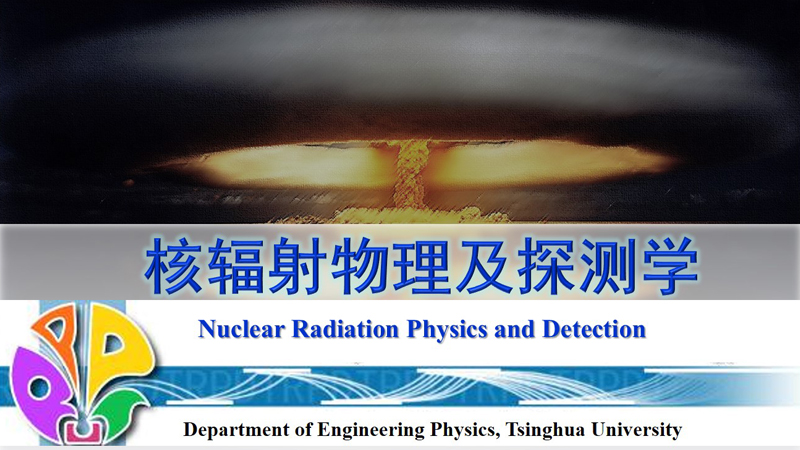
当前课程知识点:Introduction of New Structural Regional Economics > 7. A Demonstration of China's Development Achievements > 7.1.1 Targeted Poverty Alleviation Strategy > 7.1.1 Targeted Poverty Alleviation Strategy
返回《Introduction of New Structural Regional Economics》慕课在线视频课程列表
返回《Introduction of New Structural Regional Economics》慕课在线视频列表
欢迎大家继续学习
新结构区域经济学导论
我是南昌大学李汝资
本节课开始
我们将聚焦
新结构区域经济学理论指导下
中国区域经济发展取得的成就
具体包括
中国的革命老区精准脱贫
吉林振兴 长江经济带发展
长三角城市群一体化等内容
首先 我们一起了解中国
是如何发挥比较优势
与因地制宜进行贫困治理
并且以革命老区精准脱贫为例
学习新结构区域经济学理论
在贫困治理领域的具体方法
大家知道 消除贫困一直是
联合国可持续发展重点领域
中国作为世界上第一人口大国
消除贫困是重大课题
事实上
中国政府一直以来致力于
消除贫困
做了很多努力
具体来看
中国反贫困工作大致可分为6个阶段:
第一个阶段是1949年-1978年的
传统的救济方式
中华人民共和国成立初期
经济发展水平很低
整个社会处于普遍的贫困状态
在此期间
中国的扶贫工作主要是
解决人们的生存问题
政府采取了
输血式扶贫办法
第二个阶段是1978-1985年促进减轻贫穷的体制改革
1978年底
中国农村有2.5亿多贫困人口
生活在贫困线以下
而农业生产制度被认为
是主要因素
农村经济体制改革
以家庭联产承包责任制
取代集体经营体制
赋予了农民的农业生产自主权
极大地调动了农民的积极性
从而增加了粮食产量
促进了中国农村经济的快速发展
中国的贫困人口
从1978年的2.5亿
下降到1985年的1.25亿
第三个阶段
是1986-1993年大规模扶贫开发
在此期间
采取了一系列反贫困的关键措施
即 建立扶贫工作办公室
安排专项资金
农村贫困人口
从1986年的1.25亿下降到
1993年的8000万
第四个阶段是1994-2000年
解决扶贫攻坚问题
在此期间 中国实施了国家“八七”扶贫计划
目标是在7年
解决8000万农村贫困人口的基本温饱
1994-2000年 农村贫困人口
从8000万下降到3200万
第五个阶段
是2001-2013年新世纪扶贫政策
21世纪初
中国扶贫开发
面临很多新挑战
特别是一些集中贫困地区
因此 中国政府陆续颁布了
《农村扶贫开发纲要(2001-2010年)》
《中国农村扶贫开发纲要(2011 - 2020年)》
确定了14个特殊困难连片特困区
为扶贫攻坚主要区域
最后一个阶段
是2013年起实施精准脱贫战略
2013年 中国国家主席习近平
提出了精准脱贫战略(Targeted poverty alleviation,简称TPA)
扶贫开发首次被列入
中国“十三五”
经济社会发展规划
接下来 我们重点关注
2013年以来中国的精准脱贫战略
2013年11月
习近平总书记在
湘西州十八洞村视察时
首次提出
“实事求是
因地制宜
分类指导
精准扶贫”
“精准扶贫”这个关键词
从这里走向全国
2015年11月
中国政府进一步确定
贫困治理目标
到2020年末 稳定实现“两不愁三保障”
即农村贫困人口
不愁吃 不愁穿 义务教育
基本医疗和住房安全有保障
实现贫困地区农民人均可支配收入
增长幅度高于全国平均水平
基本公共服务主要领域指标
接近全国平均水平
确保中国现行标准下
农村贫困人口实现脱贫
贫困县全部摘帽
解决区域性整体贫困
目前 中国政府进一步制定了
“后脱贫时代”的
可持续生计发展战略
保障脱贫攻坚的成果
事实上
在中国的贫困治理过程中
克服了很多困难和挑战
主要困难在于
中国有14个集中连片特困区
如图所示
2000年 在全国范围内
特困县的数量最多
其次是轻度和中度贫困县
特困县609个
占贫困县总数的41.49%
特困县农村人口1.596亿
占贫困县农村人口总数的31.92%
轻度和中度贫困县
分别为490个和369个
其中农村人口分别为1.839亿人和1.566亿人
在集中连片特困区层面
集中连片特困区贫困县比例
远高于全国贫困县比例
2012年
几乎全部集中连片特困区贫困县在2000年也是贫困县
598个贫困县
占集中连片特困区县域总数的99.17%
贫困县人口18434万人
约占集中连片特困区总人口的99.46%
在如此大的脱贫挑战面前
中国减贫取得了优异的成绩
全国范围内 2000年-2014年
极度贫困 中等贫困和轻微贫困县的数量
均有下降
特困县减少608个
农村贫困人口减少1.596亿人
中、轻度贫困县
分别减少362个和458个
农村贫困人口分别减少
15573万人和17859万人
在集中连片特困区范围内
贫困县由2000年的598个减少到2014年的32个
减少率为94.65%
其中 贫困县农村人口
由18434万人减少到530万人
减少97.12%
14个集中连片特困区中
贫困县减少超过60个的
有云南-贵州-广西石漠化区
西藏地区 秦巴山区
武陵山区
与此同时 贫困县农村人口减少
超过2000万人的有
武陵山区
大别山区
秦巴山区
云南-贵州-广西石漠化区
特别是在脱贫攻坚目标提出以来
减贫成效尤其突出
2013~2019年中国农村减贫人数
分别为
1650万人 1232万人
1442万人 1240万人
1289万人 1386万人 1109万
七年来
农村已累计
减贫9348万人
年均减贫1335万人
累计减贫幅度达到94.4%
农村贫困发生率
也从2012年末的10.2%下降到2019年末的0.6%
区域性整体减贫成效明显
贫困群众生活水平大幅提高
脱贫攻坚
取得历史性重大成就
同时
与世界其他地区相比
中国减贫工作遥遥领先
中国为贫困治理所做的努力
也是意义非凡的
在2018年9月3日
联合国秘书长安东尼奥·古特雷斯
出席中非合作论坛北京峰会
他对中国扶贫事业给予了高度评价
他说“过去10年
中国是为全球减贫作出最大贡献的国家”
与此同时
中国脱贫工作取得的成就
得到了世界各大国际机构及学者的高度赞誉
2017年4月28日
全球减贫伙伴研讨会
在意大利外交部举行
来自世界银行
联合国粮农组织
联合国国际农业发展基金(农发基金)
等国际机构的代表
以及意大利的高校学者等约90人参加
会议对各国扶贫的成功经验
以及政府 政策制定者和减贫工作者
面临的重大挑战进行了总结
对中国的减贫经验表示了赞赏
联合国国际农业发展基金阿什旺尼·穆图认为
中国减贫模式效果好 效率高
在全球有目共睹
中国精准扶贫的理论和实践表明
通过良好的政治愿景
科学的扶贫战略
适宜的政策措施
实现整体脱贫是完全可能的
中国的成功实践 对推进世界减贫事业具有启示作用
好 以上就是本节课的主要内容
-1.1.1 China's Physical Geography
--1.1.1 China's Physical Geography
--1.1.1 Test
-1.1.2 Hu Line
--1.1.2 Test
-1.1.3 Economic catch-up of the central and western China
--1.1.3 Economic catch-up of the central and western China
--1.1.3 Test
-1.2.1 Overview of China’s economy
--1.2.1 Overview of China’s economy
--1.2.1 Test
-1.2.2 Coastal special economic zones in China
--1.2.2 Coastal special economic zones in China
--1.2.2 Test
-1.2.3 Western Development strategy in China
--1.2.3 Western Development strategy in China
--1.2.3 Test
-1.2.4 Northeast China Revitalization Plan
--1.2.4 Northeast China Revitalization Plan
--1.2.4 Test
-1.2.5 Rise of Central China Plan
--1.2.5 Rise of Central China Plan
--1.2.5 Test
-1.3.1 Coordinated regional development and main functional area
--1.3.1 Coordinated regional development and main functional area
--1.3.1 Test
-1.3.2 China’s urban agglomeration pattern and the economic effect
--1.3.2 China’s urban agglomeration pattern and the economic effect
--1.3.2 Test
-2.1 Agricultural location theory
--2.1 Agricultural location theory
--2.1 Test
-2.2 Growth Pole Theory
--2.2 Test
-2.3 The Stages of Economic Growth
--2.3 The Stages of Economic Growth
--2.3 Test
-2.4 Pole & Axis System Theory
--2.4 Pole & Axis System Theory
--2.4 Test
-2.5 Center-periphery theory
--2.5 Test
-3.1 Why New Structural Economics
--3.1 Why New Structural Economics
--3.1 Test
-3.2 The Theoretical Foundation of New Structural Economics
--3.2 The Theoretical Foundation of New Structural Economics
--3.2 Test
-3.3 Does New Structural Economics Offer Explanations?
--3.3 Does New Structural Economics Offer Explanations?
--3.3 Test
-3.4 Application for Industrial Policy
--3.4 Application for Industrial Policy
--3.4 Test
-3.5 Does the idea of New Structural Economics work?
--3.5 Does the idea of New Structural Economics work?
-4.1 Regional Externality
--4.1 Test
-4.2 Endowment Structure Transformation
--4.2 Endowment Structure Transformation
--4.2 Test
-4.3 Role Boundary of Facilitating Government
--4.3 Role Boundary of Facilitating Government
--4.3 Test
-4.4 Spatial Optimal Equilibrium
--4.4 Spatial Optimal Equilibrium
--4.4 Test
-4.5 Evolution of Dynamic Spiral
--4.5 Evolution of Dynamic Spiral
--4.5 Test
-5.1 China's Development Experience and OFDI
--5.1 China's Development Experience and OFDI
--5.1 Test
-5.2 Commonness and New Trends of Developing Countries
--5.2 Commonness and New Trends of Developing Countries
--5.2 Test
-5.3 Industrialization of Developing Countries with Special Economic Zones
--5.3 Industrialization of Developing Countries with Special Economic Zones
--5.3 Test
-5.4 Growth Identification and Facilitation Framework (GIFF)
--5.4 Growth Identification and Facilitation Framework (GIFF)
--5.4 Test
-5.5 GIFF in Practice and Case Studies (Nigeria, Benin and Uzbekistan)
--5.5 GIFF in Practice and Case Studies (Nigeria, Benin and Uzbekistan)
--5.5 Test
- 6.1.1 The global competitiveness model and its theoretical basis
-- 6.1.1 The global competitiveness model and its theoretical basis
--6.1.1 Test
- 6.1.2 The Brief introduction of the Theory of County Economic Competitiveness
-- 6.1.2 The Brief introduction of the Theory of County Economic Competitiveness
--6.1.2 Test
- 6.2.1 Situation of the Chinese Counties: Development Stage、Location Characteristics and Natural Res
-- 6.2.1 Situation of the Chinese Counties: Development Stage、Location Characteristics and Natural Res
--6.2.1 Test
- 6.2.2 The other Situation of the Chinese Counties and The Case of Qinyuan Pencil
-- 6.2.2 The other Situation of the Chinese Counties and The Case of Qinyuan Pencil
--6.2.2 Test
- 6.2.3 The County's Development Strategy (comparative advantage) Analysis
--6.2.3 The County's Development Strategy (comparative advantage) Analysis
--6.2.3 Test
-6.2.4 The Other County's Development Strategy (comparative advantage) Analysis and Conclusion
--6.2.4 The Other County's Development Strategy (comparative advantage) Analysis and Conclusion
--6.2.4 Test
-6.3.1 The Case of Jinjiang and Guanling
--6.3.1 The Case of Jinjiang and Guanling
--6.3.1 Test
- 6.3.2 The Case of Qianyang and Changzhi
-- 6.3.2 The Case of Qianyang and Changzhi
--6.3.2 Test
- 6.3.3 The Case of Hotan
-7.1.1 Targeted Poverty Alleviation Strategy
--7.1.1 Targeted Poverty Alleviation Strategy
--7.1.1 Test
-7.1.2 Cases of the Old Revolutionary Base Areas
--7.1.2 Cases of the Old Revolutionary Base Areas
--7.1.2 Test
-7.2 Growth Identification and Industrial Policy: Jilin Revitalization
--7.2 Growth Identification and Industrial Policy: Jilin Revitalization
--7.2 Test
- 7.3.1 The Carrying Capacity of Yangtze River Economic Belt
-- 7.3.1 The Carrying Capacity of Yangtze River Economic Belt
--7.3.1 Test
- 7.3.2 The Development of Yangtze River Economic Belt
--7.3.2 The Development of Yangtze River Economic Belt
--7.3.2 Test
-7.4 Growth Identification and Facilitation: Integration of Yangtze River Delta and High-quality Deve
--7.4 Growth Identification and Facilitation: Integration of Yangtze River Delta and High-quality Deve
--7.4 Test
-Final examination




